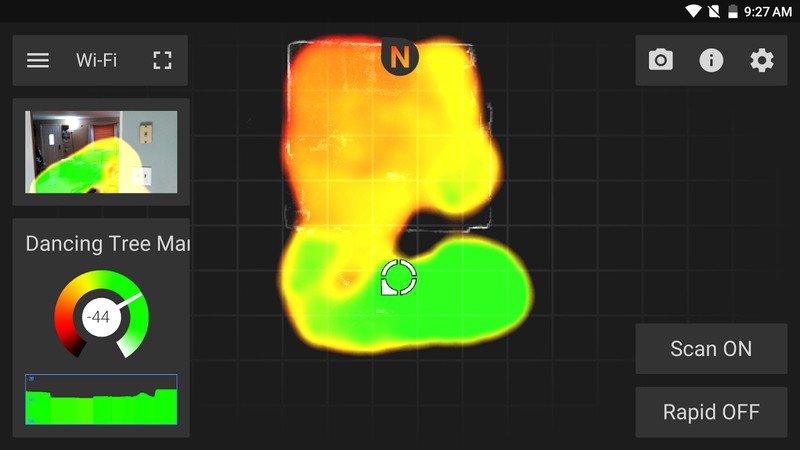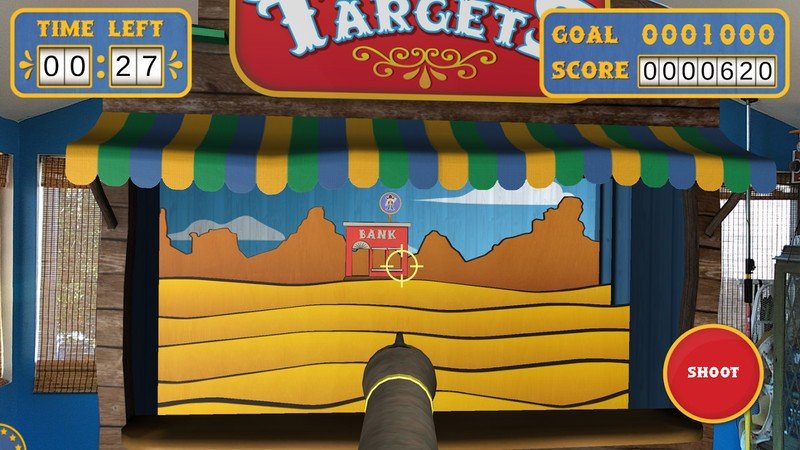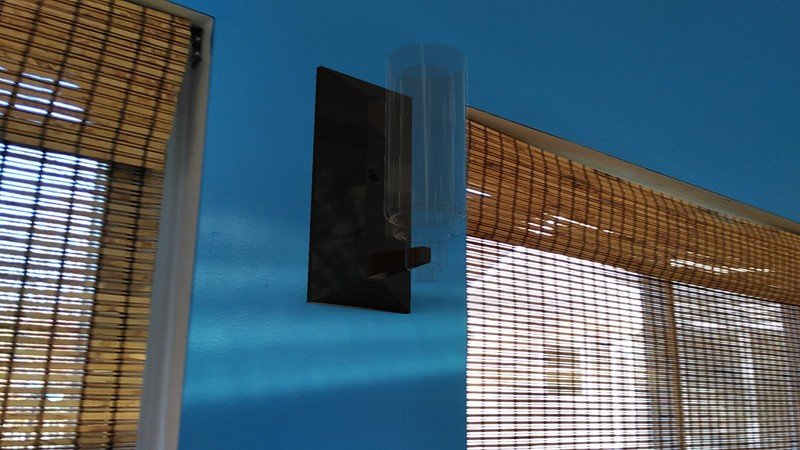The quick take
Tango remains an impressive collection of cool ideas, but the Phab 2 Pro is nowhere near ready to be considered a serious consumer product. Aside from being huge and awkward, Neither Lenovo nor Google's software is fully baked enough for this to be a complete thought.
The Good
- Decent display
- Solid build quality
- Great battery life
The Bad
- Huge and awkward
- Camera isn't great
- Tango is half baked
- Lenovo's notifications are awful
It's very easy to think about Tango in individual contexts. We've seen it used as an incredible tour guide for museums, deployed on the International Space Station inside NASA's SPHERES satellites, and even used as the eyes of an autonomous drone. The individual possibilities for using the computer vision tech in Google Tango has demonstrated itself as highly useful in very specific situations, but what happens when you put all of that tech in the hands of a consumer?
Lenovo's Phab 2 Pro is the first retail product with Tango onboard, a massive smartphone with all the computer vision potential. You won't find it in a carrier store next to the Moto Z, though. It's available to purchase in Lowe's hardware stores as a phone that gives users the ability to measure objects in space and even place objects in augmented reality so you can "see" the product in the home or office before you buy it. The suggestion here is that the phone isn't really built for the Facebook generation, but is instead a smarter tool for contractors or interior designers to show their customers what their house could look like with a bit of help.
At the same time, Lenovo makes sure everyone knows this phone is also an entertainment powerhouse. A massive high resolution display with a quality audio system and a rich gaming experience thanks to the Tango Core, but it is lacking support for Google's new Daydream VR platform. Lenovo's selling points differ from what you see on the shelf at Lowe's, which differs again from Google's initial vision for Tango.
So, who is this phone for? Is this a massive media and gaming powerhouse? Will this become standard issue for contractors and interior decorators? Should eager tinkerers prepare little robots for this phone to power? Maybe all of the above? Read on to find out.
Get the latest news from Android Central, your trusted companion in the world of Android
About this review
I'm writing this review after six days with a retail Lenovo Phab 2 Pro (model PB2-690Y) in Glen Burnie MD on T-Mobile. This review unit, which was provided by Lenovo, was using software version PB2-690Y_S100020_160924, based on Android 6.0.1 with the August 1, 2016 security patch.
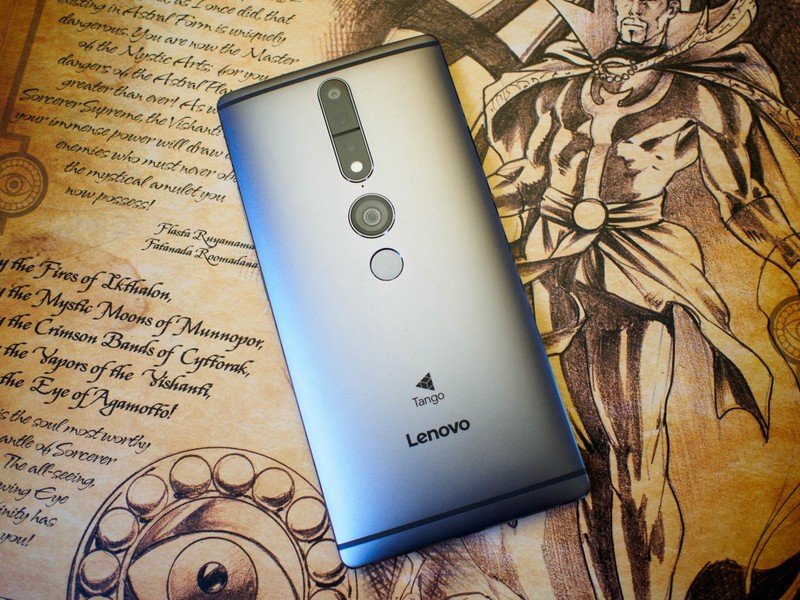
You'll need two hands
Lenovo Phab 2 Pro Hardware
As the name suggests, Lenovo's Phab 2 Pro is a big phone aimed at people who want to do a lot on the go. As much as I despise the word phablet, it really does apply here. This behemoth gave me flashbacks to the Sony Xperia Z Ultra, only thicker and a lot more solid. Make no mistake, this is is only a phone for people who like massive screens and the batteries that drive them.
The outer casing isn't anything special when it comes to design, but checks all the right boxes for a quality build. The aluminum body feels solid and has just the right amount of grip, with a nicely textured power key and a tactile volume rocker with very little wiggle. The edges of the phone have a slight chamfer that catches light well, but offers little towards making the phone comfortable to hold with one hand. Across the top of the phone you'll find the headphone jack off to the left, and on the bottom of the phone you'll find what looks like stereo speaker grilles on either side of a Micro-USB port. In reality, it's a single Dolby Atmos speaker firing down with the other side for what Lenovo calls a 360-degree microphone array.
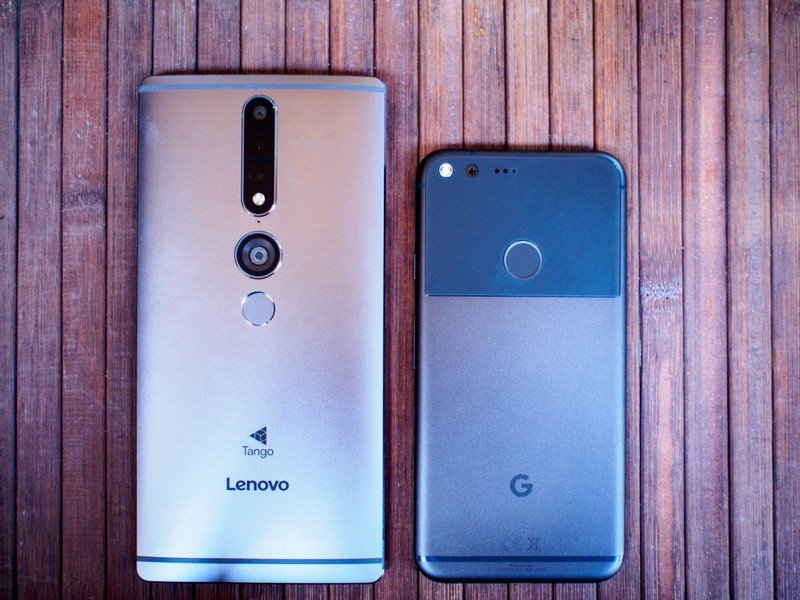
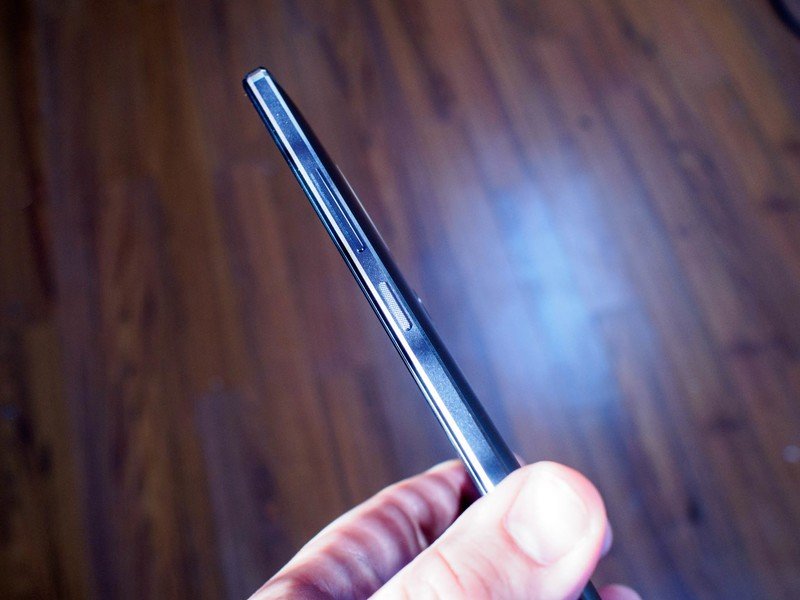

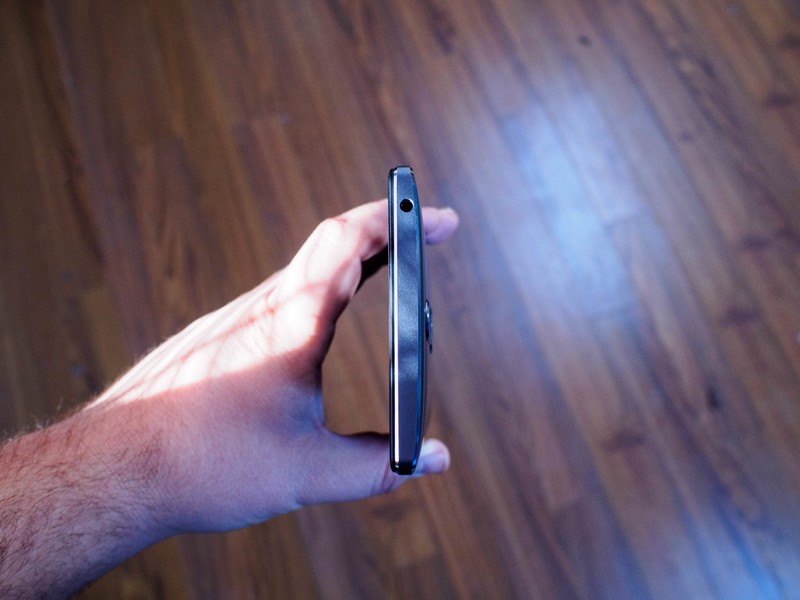

The front of this Phab 2 Pro is a single sheet of 2.5d curved Gorilla Glass. It's not curved like the Galaxy S7 edge or LG G5, but the edges of the glass slope away into the bezel connector in a way that makes this phone a little easier to grip by the sides. Instead of software navigation keys like most Android phones, Lenovo went with the old school soft keys under the display. You only see those keys when lit up, which isn't all the time, so when the display is off the only thing you see on the face of this phone is the camera off to the right of the top speaker. Toss in a couple of antenna lines on the top and bottom and a fingerprint sensor dead center of the back, and you've got a fairly generic looking phone. You know, as long as you ignore the three cameras taking up the top half of the phone.
This phone should have been an early Christmas present for nerds.
In order for Tango to work, Google uses a standard RGB sensor, and infrared sensor, and a fisheye lens. The standard 16MP sensor and infrared sensor work together to "see" things, and the fisheye lens adds human-style depth perception, among other things. All three of these cameras work together with the specially optimized Snapdragon 652 processor to give this phone the information needed for a successful Tango experience. You hold the phone up with two hands, look at the QHD IPS display as though you were peering into another world, and in theory Tango does the rest.
It's difficult to imagine this phone with a case on it. The Phab 2 Pro is not fun to carry around in your pocket, both because it weighs more than half a pound and because the 6.4-inch display is noticeably larger than any phone I've tested over the last year. People using this phone for commercial reasons, like consulting on hardware installations, are going to want a case — which is going to make this phone even larger. It's possible there are people out there who would buy this phone because it's fairly inexpensive and gets you a massive display and a 4050mAh battery, but either way dropping this phone is not going to be fun for anyone.
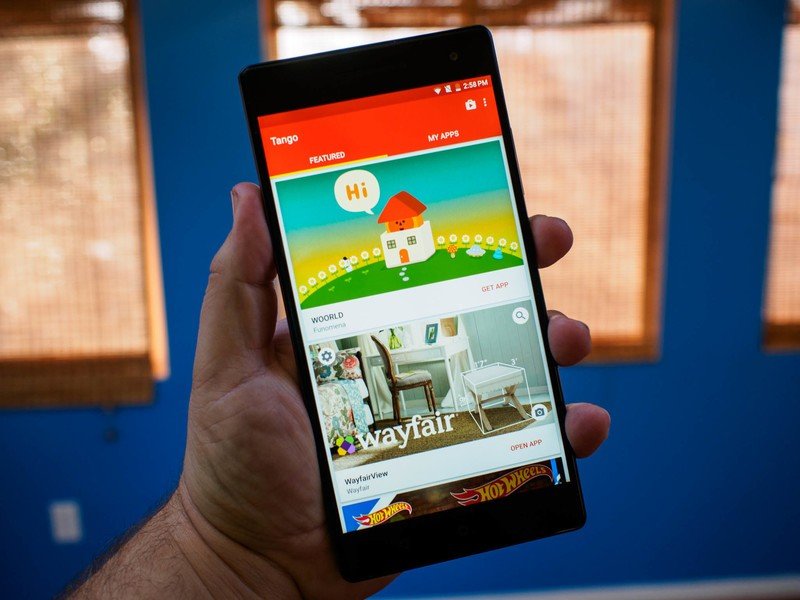
No, really. When does this get good?
Lenovo Phab 2 Pro Software
This is the part where I, the VR and AR nerd, am supposed to tell you how much better your life would be if you had the ability to look through your phone and see another reality. Having followed Tango and drooled over the potential for years, this phone should have been an early Christmas present for nerds like me. Instead, Lenovo and Google seem to have tried their best to make this phone one of the least enjoyable experiences I've had in 2016.
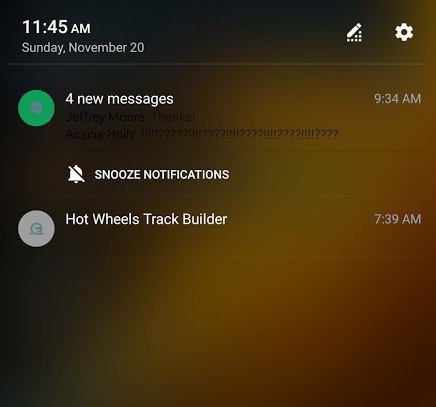
Lenovo's Android has never been great. Previous iterations of their software have been visually uninspiring and on several occasions included bloatware that bordered on offensive. After the purchase of Motorola and the release of the fairly impressive Yoga Book, it seemed as though Lenovo's software was finally getting the overhaul it needed.
While Lenovo has worked hard to stay close to something that more closely resembles stock Marshmallow with this release, it all falls apart with the notifications. They're transparent with either black or white text, which means no matter what wallpaper you're using the notifications are often difficult to read in the best of lighting. Out in daylight, forget about it.
Lenovo and Google seem to have tried their best to make this phone one of the least enjoyable experiences I've had in 2016.
This phone does dial it way back on added software though. The only nonstandard apps installed are Accuweather, McAfee Security, Sound Recorder, and SYNCit for people who want a third-party backup tool for their phone. Sound recorder makes sense, given the special microphone array this phone has. The purpose is to offer a more complete 360-degree recording solution, and it works noticeably better than just sticking a recording app on a Pixel and leaving it on a table to record while you talk. This is a great feature for talking through something in an interview format, but there aren't a ton of other uses for this microphone setup.
Obviously the big software feature here has basically nothing to do with Lenovo. Google Tango already has more apps in the Play Store than Google Daydream does, and only two are actually made by Google. These apps can be broken out into three basic categories:
- Games take a look at the environment around you and overlay some kind of activity for you to interact with. This can be a small simulated city like Towers for Tango, a firing range where you point your phone and tap to shoot like Tango Targets, or a table full of puzzle pieces for you to walk around the real world and interact with. Most of these require fairly low accuracy and so work fairly well. There's also some surprisingly big names, like Crayola Color Blaster and Hot Wheels Track Builder Tango.
- Shopping apps let you browse Amazon, Wayfair, Lowe's, and others for a variety of products and then show you what those products would look like in your home. The measurements offered in the product description and Tango's computer vision work together to place objects in augmented reality so they don't clash with anything in the real world, and as long as your room is well lit and you have a fairly open space this method of shopping works well.
- Tool apps let you measure 2D and 3D spaces with an app, and allow you to store those measurements for later. This can be physical measurements or a way to observe things like signal strength for Bluetooth, Wi-Fi and cellular networks in the real world. These apps require accuracy to be effective, which means wide open spaces and proper lighting to "see" everything clearly. Even in perfect conditions, tool apps still have a high failure rate.
Very little in this software experience works the way it should.
While games are a great way to show someone Tango and give a starting idea for what computer vision is all about, it's a serious problem that these are the most accurate apps in the Tango arsenal. Not only is this setup only useful indoors, but even in ideal conditions the software isn't reliable. Google's Measure app starts with a warning that it's meant for estimation and not for accuracy. Shopping apps are more reliable when you're in a well lit room, but fail quickly in low light and handles collision poorly if your goal is to see how well a corner table would look with two real couches on either side.
Very little in this software experience works the way it should. Between the frequent failure rate of individual apps to Lenovo's aggressively mediocre implementation of Android, it's not entirely obvious who would enjoy this experience enough to justify spending money exclusively for playing with Tango. I say playing because that's basically what you're doing with these apps. The tools aren't accurate enough to be considered useful by real contractors. The shopping apps would only be useful to interior designers in an empty, well-lit home. The games are only fun if you happen to have a ton of free space in you home to enjoy them, which isn't a ton of people.
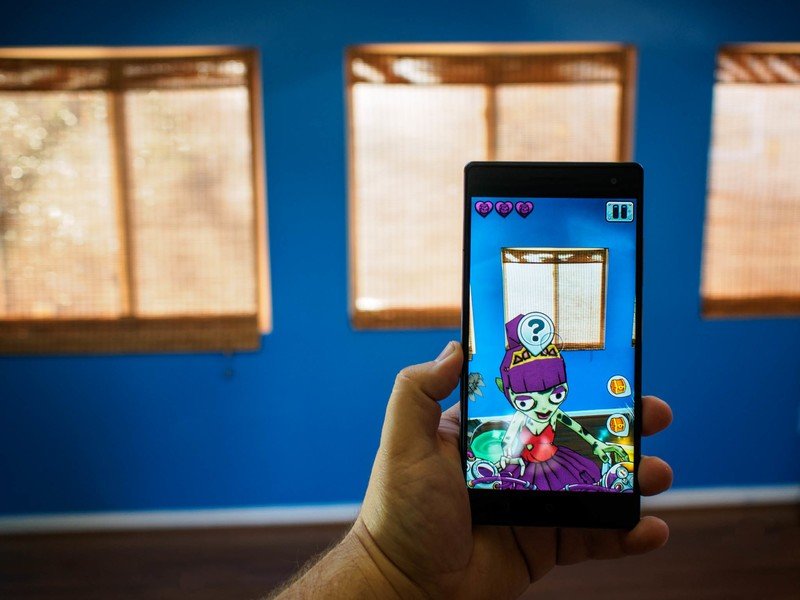
Dragons are cool, I guess.
Lenovo Phab 2 Pro Experience
You know how some phones just sort of disappear in your pocket? This is not one of those phones. The good news is I don't think I'd ever misplace this phone, regardless of how long I used it. The less good news is I can't take this phone anywhere without either putting it in my jacket pocket or wearing a belt. It's not that the phone is big — though really, this is such a huge damn phone — it's the weight. Some of that is top be expected with a huge battery and a metal body and the additional hardware, but comparing the weight of this phone to every other on my desk is incredible.
Speaking of that big battery, if I don't touch the Tango features at all, I can get through a normal 16 hour day with 55% battery remaining when I go to sleep. With Quick Charge 2.0 on board, I can recharge this phone in minutes and basically never worry about it dying. Unless, of course, I start a Tango app. On average, Tango apps drain 10% of the battery for every 15 minutes of use, which is insane. It's no shock that three cameras and the act of processing that information while displaying content on the screen consumes battery, but you can crush almost half of the battery on this phone with an hour of Tango use. There aren't a lot of situations that call for an hour of Tango use though, so it's unlikely to be a huge deal in day to day use.
There's a lot of promise in tech like Tango, but this phone was not ready for primetime.
It cannot be overstated how poorly Tango operates in less than ideal situations. The Signal Mapper app failed 16 out of the 18 times I tested it. Between Google Measure and the measure tool in the Lowe's app, I got a mostly accurate measurement twice after using both apps every day for nearly a week. The number of time I've seen "Unfortunately, Tango Core has stopped" is embarrassing. In no way should this experience be on a store shelf right now.
But at the same time, the promise of Tango remains. This tech is so damn cool, and now that it's in a form factor that can generously be called a phone at a reasonable price it's accessible to way more people. This may not deserve to be a consumer product yet, but Project Tango as a concept is something incredible and powerful. Right now it just only works when you're inside a big empty room and conditions are perfect.
Some of that may be due to Lenovo's primary camera. It's not the best sensor for grabbing detail, and in low light the sensor struggles a lot. I found myself frequently wondering what would happen if a Tango Pixel existed, with a sensor that handled low light like a champion and could combine powerful AR with Google Daydream VR. That's obviously not happening anytime soon, but it's a cool thought. In the mean time, Lenovo's camera does include a cute AR mode that lets you overlay some animals for you to take some photos. Here's a quick look at some of the shots I grabbed this week.



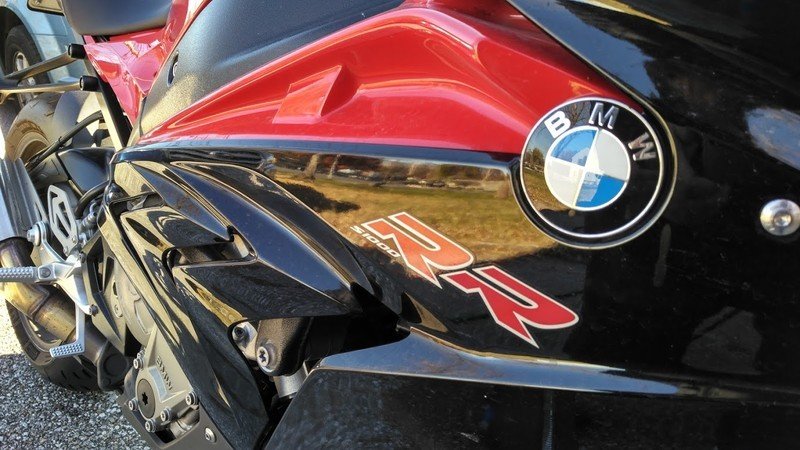
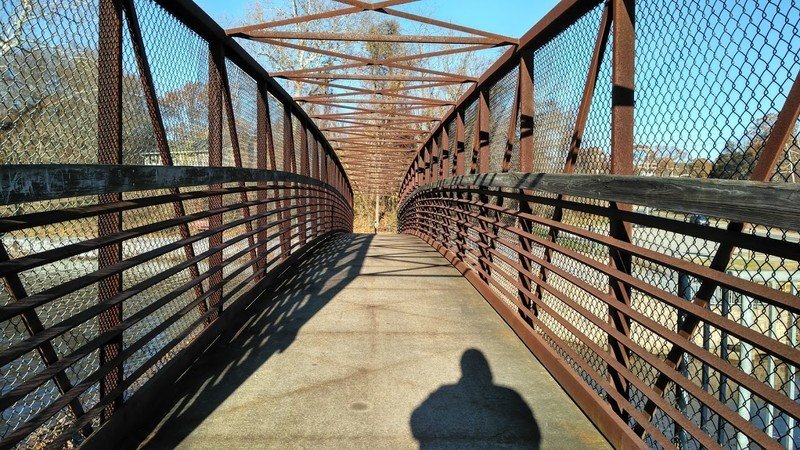

There's a lot of promise in tech like Tango, but usually that promise is in contained experiences. A detailed 3D guide of a store is cool, but only if enough people own something that justifies the experience. This could be great when specialized for specific things, but on its own it's difficult to imagine wanting this phone in my pocket every day.

The bottom line
Should you buy the Lenovo Phab 2 Pro? Probably not
Is it possible that Tango will improve with time? Sure. At one third the cost of Google Glass — that's $499 for the uninitiated — it's the kind of thing we'll see show up at hacker spaces for cool one-off ideas over the next two years. It's difficult to imagine this being the kind of thing you see someone casually using in public, and it's even more difficult to imagine a professional using this to enhance their work and being satisfied with the results right now.
But as a daily driver, even if you're really hyped about Tango and Augmented Reality? This isn't what you want, at least not yet.


